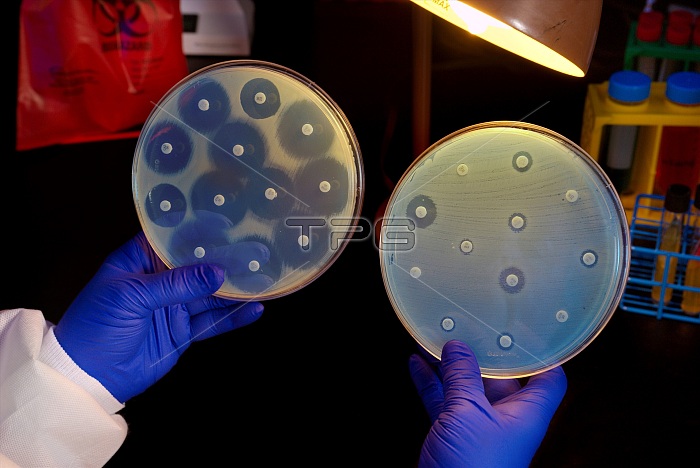
Centers for Disease Control (CDC) microbiologist Kitty Anderson holding up two Petri dish culture plates growing bacteria in the presence of discs containing various antibiotics. The isolate, i.e., bacterial specie, on the left plate is susceptible to the antibiotics on the discs, and is therefore, unable to grow adjacent to the discs. The plate on the right was inoculated with a Carbapenem-Resistant Enterobacteriaceae (CRE) bacterium that proved to be resistant to all of the antibiotics tested, and is therefore, able to grow near the discs. CRE are a family of germs that are difficult to treat because they have high levels of resistance to antibiotics. Klebsiella species and Escherichia coli (E. coli) are examples of Enterobacteriaceae, a normal part of the human gut bacteria, that can become carbapenem-resistant. Types of CRE are sometimes known as KPC (Klebsiella pneumoniae carbapenemase) and NDM (New Delhi Metallo-beta-lactamase). KPC and NDM are enzymes that break down carbapenems and make them ineffective.
| px | px | dpi | = | cm | x | cm | = | MB |
Details
Creative#:
TOP22304274
Source:
達志影像
Authorization Type:
RM
Release Information:
須由TPG 完整授權
Model Release:
N/A
Property Release:
No
Right to Privacy:
No
Same folder images:

 Loading
Loading